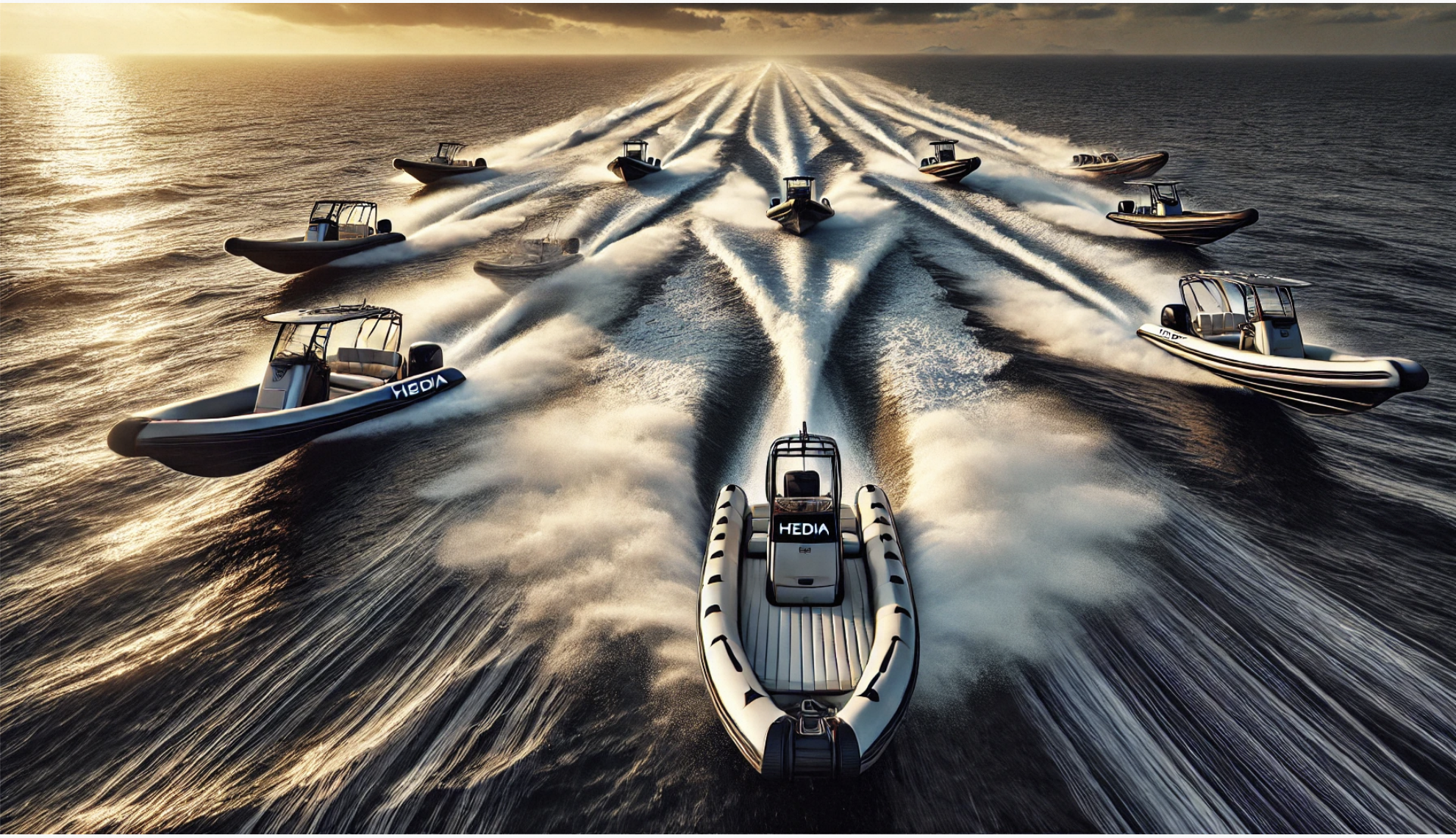Can You Flip a RIB Boat?
Rigid Inflatable Boats, or RIB boats, are well-known for their stability, speed, and versatility on the water. Whether you're using them for leisure, professional, or emergency purposes, RIB boats offer numerous advantages over traditional boats. But, like any vessel, questions about their safety and stability often arise. One common question among boaters is: Can you flip a RIB boat?
In this blog post, we will explore the design and characteristics of RIB boats, why they are less likely to flip compared to other types of boats, and what factors might influence the stability of a RIB boat. We’ll also look at how choosing the right RIB boat manufacturer and an aluminum RIB boat can further enhance safety.

The Unique Design of a RIB Boat
To understand the stability of a RIB boat, it’s important to know its design. RIB boats are characterized by a rigid hull made from materials like fiberglass, aluminum, or composite materials, combined with inflatable tubes running along the boat’s sides. This hybrid design is what sets RIB boats apart from traditional boats, offering a perfect balance of durability and buoyancy.
The inflatable tubes provide significant additional flotation, which helps the boat remain stable in the water, even under challenging conditions. The inflatable sections act as large airbags, preventing the boat from tipping over easily. This buoyancy is particularly important in rough seas, where RIB boats excel due to their ability to stay afloat and absorb the impact of waves.
How Stable Are RIB Boats?
The short answer to the question "Can you flip a RIB boat?" is: it’s very difficult, but not impossible. RIB boats are inherently stable because of their design. The rigid hull provides the structural strength and durability, while the inflatable tubes offer buoyancy, which keeps the boat afloat even in choppy waters. This dual design significantly reduces the chances of the boat flipping or capsizing.However, like any watercraft, RIB boats do have limits. While they can handle rough water, excessive speed in challenging conditions or sharp turns can still cause instability. The boat could potentially capsize if the RIB boat is overloaded, improperly balanced, or if excessive force is applied during high-speed maneuvers. This is why it is crucial to operate the boat within its specified limits and follow safety guidelines provided by the RIB boat manufacturer.
Why Are RIB Boats Less Likely to Flip?
There are several reasons why RIB boats are much less likely to flip compared to other types of boats:
a. Inflatable Tubes Provide Additional Stability
The most obvious reason for the stability of a RIB boat is the inflatable tubes. These tubes act as stabilizers, keeping the boat upright and helping it return to an upright position in case it does tip. This unique design makes RIB boats more stable than traditional boats with solid sides, which rely solely on the hull for buoyancy.
b. Low Center of Gravity
The rigid hull of a RIB boat is designed to keep the center of gravity low. This contributes to better stability when the boat is in motion or when it encounters rough waters. By having a low center of gravity, the boat is less likely to tip over, even during high-speed maneuvers or in turbulent seas.
c. Shock Absorption
The inflatable tubes also act as shock absorbers, reducing the impact of waves on the boat. This added cushion not only makes the ride more comfortable but also helps maintain the boat’s stability, reducing the risk of flipping when hitting larger waves or rough water.
d. Resilience to Impact
The rigid hull and inflatable tubes are designed to withstand impacts from waves and other objects without compromising the boat’s stability. This makes RIB boats highly resistant to flipping, especially in conditions that might otherwise cause damage or instability in a traditional boat.
What Factors Could Cause a RIB Boat to Flip?
While RIB boats are inherently stable, certain factors can increase the risk of flipping:
a. Excessive Speed or Sharp Turns
RIB boats are fast and can reach impressive speeds. However, driving at excessive speeds in rough waters or making sharp turns at high speeds can cause the boat to lean and potentially flip. It’s important to always operate the boat within its recommended speed limits, especially in challenging conditions.
b. Overloading the Boat
Every RIB boat has a maximum weight capacity. Exceeding this capacity by adding too many passengers or too much gear can throw the boat off balance and increase the risk of capsizing. It’s crucial to distribute the weight evenly to maintain stability.
c. Incorrect Loading or Unbalanced Weight Distribution
Improper loading or unbalanced weight distribution can cause a RIB boat to become unstable. This can occur when heavy items are placed on one side of the boat, making it more likely to tip over. Always ensure that the load is balanced and evenly distributed across the boat.
d. Severe Weather Conditions
Although RIB boats are designed to handle rough water, extreme weather conditions, such as large waves or storms, can still pose a risk. It’s always advisable to monitor weather conditions before taking a RIB boat out on the water. In extreme cases, even a RIB boat can flip if the conditions are too severe.
Choosing an Aluminum RIB Boat for Increased Durability
For added safety and durability, many boaters opt for aluminum RIB boats. The aluminum hull provides superior strength and impact resistance compared to fiberglass. In case of rough handling or a minor collision, aluminum RIB boats are less likely to sustain damage that could compromise the boat’s stability.
The corrosion resistance of aluminum RIB boats also ensures that the boat can withstand harsh marine environments, including saltwater, without degrading over time. This makes aluminum RIB boats particularly well-suited for long-term use, offering additional peace of mind when navigating rough waters.
What to Do if a RIB Boat Flips?
Although it's rare, a RIB boat can flip under extreme conditions. If this happens, don’t panic. The unique design of RIB boats makes them easier to recover than many other types of boats. The inflatable tubes make it easier to right the boat by simply pulling it over, and the boat will float even if it tips over, thanks to the buoyancy of the tubes. Always wear a life jacket, and make sure you know the proper procedures for righting your boat.
Conclusion
So, can you flip a RIB boat? While it is technically possible, it is highly unlikely due to the boat’s design and stability features. The combination of a rigid hull and inflatable tubes provides excellent buoyancy and shock absorption, making RIB boats far less prone to flipping than traditional boats. However, safe operation is key to preventing accidents. Always adhere to speed limits, weight restrictions, and proper handling techniques to ensure a safe and enjoyable boating experience.
For those seeking enhanced durability and performance, aluminum RIB boats provide added strength and resistance to corrosion, making them a great choice for tough marine conditions. Whether you’re using your RIB boat for recreation, work, or emergency response, it’s a reliable and stable vessel that will perform well in a wide range of conditions.


